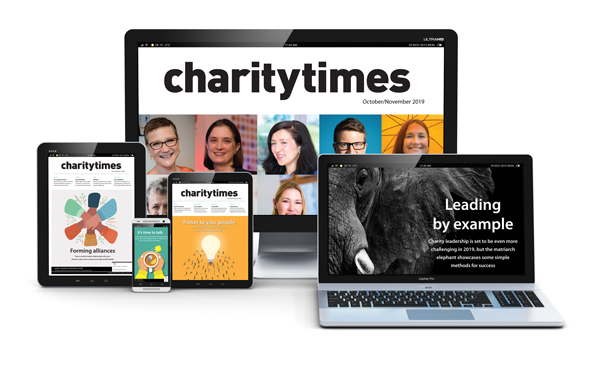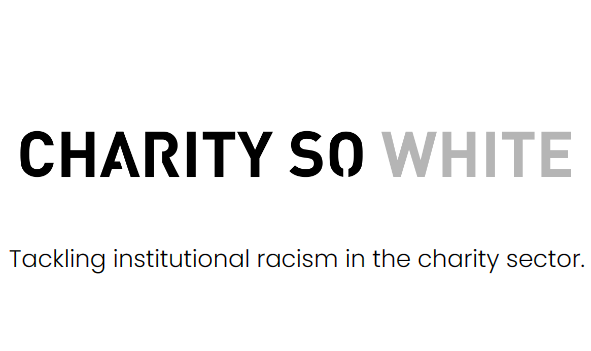Dr Diego Arenas and Nicole Holgate, communications manager at DataKind UK explain why and how you should be putting your charity on the map and using them for your and your beneficiaries' benefit.
_________________________________________________________________
Maps are one of oldest and most instantly recognisable forms of data, used for plotting distance, representing geographical features and landmarks, and interpreting other information across geographies. From scrolls showing trade routes, to modern weather forecasting, they are an incredibly effective way to share information.
Why should charities use them?
Mapping is a way to look at your services with a literal bird's eye view, in a way that needs less translation, and can be more accessible than a written report. It can be a huge time- and money-saving exercise to map out where, for example, your service users are. It can support fundraising; provide an overview of how your outreach is distributed; evidence where services have the greatest impact; and reveal how you could streamline your operations or resources. There is a range of free platforms and ways to combine your information with other useful data sets. Plus, there are more no-code options than ever before - check out some of the tools we recommend at the end of this blog.
Find those in need
Where are the people who use your support? Could you expand your outreach, or provide additional support to reach other areas? A visual representation of where you operate can provide an understanding of the local area and the people who live in it, to identify areas of greatest need. It can also highlight the need for more services in areas you may not have considered. The Index of Multiple Deprivation, for example, provides a number of indices for vulnerability, such as poverty. Overlay a map of people you currently support with data from the Index, and you can see whether you are effectively finding the people you want to help, or missing key places. Citizens Advice Lewisham created comparison heatmaps to check that they were reaching those who might need their support.
Develop your knowledge of your audience
You can gain a deeper understanding of service users by adding more layers of information, such as whether people living more than three miles from your hub tend to drive to your services, and have the most questions about child development. This can evolve into more complex analysis to predict and distribute future services by looking at patterns over time, such as seasonal increases in needs for childcare, heating, or food parcels. In the example below, Material Focus combined information about distance from recycling points with demographic information to learn about who was most likely to recycle.
Target and allocate resources
Mapping use and distribution of resources within your services will show you what different parts of your area of operations use more, or less, of. This kind of analysis can help you to plan and allocate limited resources, or identify where and how best to distribute them. Do certain hubs use different resources than others? Are some being under-used, or are some areas not receiving enough of the right support?
Understand your area
Mapping can also help charities to better understand the local environment, infrastructure, and vulnerable populations. Often, local government socio-economic surveys contain a geographic component that can be mapped, to understand the needs of the communities living in a given area or neighbourhood. This can help you to identify under-served demographics, or key groups you might not be reaching.
Develop relationships
Visualising all of the evidence about the need in your area, versus the services provided, can help your organisation to build better relationships with local partners and agencies, giving them a more complete picture. This can be key to a holistic approach that benefits a whole community — it also reinforces asks for resources and more support. Based in the London borough of Hammersmith & Fulham, Sobus highlighted the amount of BAME people using their services to draw more support from other local organisations and fuel engagement with mental health support in the area.
How do I work with data to do this?
You simply need an address to start working with geospatial data. Combined with any other location-based or geo-referenced dataset, you can add layers of value to an analysis. These data sets could include census data, socio-economic surveys, and summary statistics from local authorities. You’ll also hear two terms when looking at mapping your data — geospatial, and GIS.
Geospatial
Geospatial is the processing of location and geographic data to analyse and understand patterns and trends. Geospatial data is any data that has a geographic component, such as latitude and longitude coordinates, postcodes, and addresses. Common examples of geospatial data include GIS, geo-tagged photos, and satellite imagery.
GIS
GIS stands for geographic information system. It is a computer system used for storing, managing, analysing, and visualising geospatial or geographic data. GIS allows users to view, analyse, and create visualisations of geographic data, such as using a car satellite navigator with an added ‘layer’ that warns you about busy traffic ahead on your journey.
Managing risk
Risk factors when it comes to geospatial data are usually privacy-related — you need to ensure that any individual’s location isn’t explicitly revealed, especially when cross-referencing it with additional information that could help to identify people, such as age or race.
Anonymisation can be done by expanding the area you include to, for instance, groups of 50 households, LSOAs (Lower layer Super Output Areas), or by only using the first half of a postcode. Similarly, latitude and longitude information should be rounded up so that it encompasses larger areas. Be mindful that in a sparsely populated or rural area, a large
region could still contain very few people.
Location data such as route mapping can also be used to identify individuals, for example if they frequently move between their home address and workplace. In one unusual example, fitness app Strava revealed the locations of military bases. This kind of information is hard to disguise, so careful consideration should be taken of whether it is necessary to use it at all.
In international situations, satellite imagery may reveal sensitive information, such as the location of refugees. Ways to disguise this include removing any latitude and longitude data attached to the images, and downsampling them so that they appear coarser.
Another risk is inaccurate data, especially in areas where what you’re recording isn’t captured easily by surveys, local authorities, or satellites. Some organisations rely on support on the ground to ensure that their local knowledge is up to date — this manual approach is time and resource-intensive, but can be crucial to helping very specific regions.
In action: Mapping recycling points with Material Focus
Material Focus is an independent not-for-profit that works to improve the rate of electrical recycling in the UK in order to save and reuse valuable resources, as well as limit waste.
They used maps to visualise their existing data, combine it with other data sets, and assess what affects recycling rates. They drew from their own records, open data sets of demographic information, and locations of recycling points across the UK. This gave them an incredible picture of who recycles the most and where, and what could inspire much more electrical recycling across the country.
This evidence will help them show local authorities how they can improve recycling levels, and how big national retailers can also have an impact by adding more collection points. With an upcoming consultation on government legislation of waste electricals, mapping this data could make a real difference to recycling in the UK.
Read more about their project
Tools and Guides
There are plenty of tools out there that map your existing data, and combine it with other useful data sets. Here are our top Mapping resources.
If you’d like to learn more from DataKind UK about how your organisation can work with data, please sign up to our mailing list for more news from other charities, resources, and articles.
Latest News
-
Funder launches initiative to improve charity board diversity
-
National Trust's former legal counsel takes senior role at charity regulator
-
Government ‘slow to tweak’ consumer law to protect charities, MP warns
-
2025: The long-reads
-
City of Culture charity to be supported for further two years
-
Friday funding roundup - 19 December
Charity Times video Q&A: In conversation with Hilda Hayo, CEO of Dementia UK
Charity Times editor, Lauren Weymouth, is joined by Dementia UK CEO, Hilda Hayo to discuss why the charity receives such high workplace satisfaction results, what a positive working culture looks like and the importance of lived experience among staff. The pair talk about challenges facing the charity, the impact felt by the pandemic and how it's striving to overcome obstacles and continue to be a highly impactful organisation for anybody affected by dementia.
Charity Times Awards 2023
Mitigating risk and reducing claims

The cost-of-living crisis is impacting charities in a number of ways, including the risks they take. Endsleigh Insurance’s* senior risk management consultant Scott Crichton joins Charity Times to discuss the ramifications of prioritising certain types of risk over others, the financial implications risk can have if not managed properly, and tips for charities to help manage those risks.
* Coming soon… Howden, the new name for Endsleigh.
* Coming soon… Howden, the new name for Endsleigh.
Better Society

© 2021 Perspective Publishing Privacy & Cookies





.jpg)





Recent Stories